-
Posts
2925 -
Joined
-
Days Won
25
Content Type
Profiles
Forums
Events
Posts posted by Rad
-
-
I've used the TE6 and it is a good tool but maybe in some respects overkill. In nice soft granite it will drill more holes on a charge than one probably should in a day.Most of us are going to make some mistakes anyway but if you try to place 20 bolts at a time (and I've seen it done with the TE6 ) there will probably be a lot of misfires.
Good point Matt. IMHO placing a bolt is an act that should not be taken lightly as it permanently alters the rock. Before placing a bolt I try to address the following questions:
- Is the line worth developing (aka will others want to climb it)?
- Does it need to be a lead route (some routes in other parts of the country are top-rope only)
- Is there other protection available that could eliminate the need for a bolt?
- Is bolt placement consistent with the traditions of the crag under development?
- Is the bolt being placed with subsequent climbers in mind (preferred IMHO) or only to suit the needs of the FA party (selfish IMHO).
- Would the selected bolt placement adequately protect the leader from hitting the ground, a ledge, or another nasty obstacle?
- Would the bolt protect moves that need to be protected?
- Is the bolt being placed so that people of average height can reach it from a reasonable clipping stance?
- Is the placement a reasonable distance from protection before and after that point in the climb?
- Would the bolt place the rope and/or quickdraws so that they obstruct a key feature needed for freeclimbing?
- Is the bolt being placed in line with other protection so that rope drag will be minimized?
- Is the bolt being placed away from rock features, such as roofs and ledges, that could cause significant rope drag or other problems?
- Would the bolt be in solid rock away from weak points?
- Would the bolt be near a sharp edge that could cut/damage the rope or a quickdraw?
Placing bolts using a power drill is the easiest and fastest part of route development, and it's one of the last steps I take.
But that's me. I'm sure others have other opinions.
No bolting arguments/discussions please...i'm only asking about the drill itself...i've put in enough routes already...not a noob here...
I'm just responding to Matt's comment. Feel free to ignore my post if you wish.
-
I've used the TE6 and it is a good tool but maybe in some respects overkill. In nice soft granite it will drill more holes on a charge than one probably should in a day.Most of us are going to make some mistakes anyway but if you try to place 20 bolts at a time (and I've seen it done with the TE6 ) there will probably be a lot of misfires.
Good point Matt. IMHO placing a bolt is an act that should not be taken lightly as it permanently alters the rock. Before placing a bolt I try to address the following questions:
- Is the line worth developing (aka will others want to climb it)?
- Does it need to be a lead route (some routes in other parts of the country are top-rope only)
- Is there other protection available that could eliminate the need for a bolt?
- Is bolt placement consistent with the traditions of the crag under development?
- Is the bolt being placed with subsequent climbers in mind (preferred IMHO) or only to suit the needs of the FA party (selfish IMHO).
- Would the selected bolt placement adequately protect the leader from hitting the ground, a ledge, or another nasty obstacle?
- Would the bolt protect moves that need to be protected?
- Is the bolt being placed so that people of average height can reach it from a reasonable clipping stance?
- Is the placement a reasonable distance from protection before and after that point in the climb?
- Would the bolt place the rope and/or quickdraws so that they obstruct a key feature needed for freeclimbing?
- Is the bolt being placed in line with other protection so that rope drag will be minimized?
- Is the bolt being placed away from rock features, such as roofs and ledges, that could cause significant rope drag or other problems?
- Would the bolt be in solid rock away from weak points?
- Would the bolt be near a sharp edge that could cut/damage the rope or a quickdraw?
Placing bolts using a power drill is the easiest and fastest part of route development, and it's one of the last steps I take.
But that's me. I'm sure others have other opinions.
-
Batteries can be almost as expensive as the drill, so I wouldn't plan on a lot of batteries. It's important to take good care of batteries or they will crap out on you.
50-60lbs sounds too high. The TE6A system that Alex and I have might be 15-20lbs with drill + 1 battery.
Weight might not be as much of a factor as you think. You could pull the drill up to a stance on a tagline from if bolting on lead. Dangle it below you if coming in from above. Either way, you shouldn't have to make free moves carrying the drill, though that can speed things up at times.
Some of the experienced developers on here have creative solutions that separate the drill from its batteries. Maybe they will chime in too.
BTW, when I bought my drill used I tested it on a granite erratic and was able to drill 12 holes on a full charge in less than ten minutes. From experience, I can tell you that trying to drill with a crappy drill and/or crappy battery is no fun.
-
Believe it or not I'm not trying to razz you. The crampons are classic though, you should write a TR from that trip and post it to enter one of these contests.
-
Great TR. That ramp looks like the most reasonable approach this late in the season.
I don't suppose those crampons belonged to you or Craig?My crampons from my first trip up the pillar in 2004 with Ron Kirby. Colin and Jens climbed the pillar the following weekend; Colin originally grabbed the crampons but shortly into the pillar pitches realized why I had left them in the first place and promptly hung them on the nut where they still remain it appears.
What ever happened to the neutrino and windshirt?
-
Rad: Indeed, this is true. The climbing, as most also post on other forums, remains consistently 4th class with intermittent sections of 5th. There are a few sections of where you have consistent mid-fifth climbing, and spots with 5.8 and 5.9. This is in part the nature of ridge traverses, though certainly they can differ from range to range. It's less about the consistency at a technical grade and more the scope of pulling it off in a day and efficiency at altitude that pose the greater aspects of the route's challenge.
Certainly, don't take the beta as exact points on the ridge, but more as comments on each section noted between peaks. And it goes without saying this is just our experience.... so much can depend on micro-routefinding choices as to weather folks experience the same.
Go get 'er!
Thanks. I was mainly asking because while I'm probably willing to free solo mid fifth, I'm unlikely to be willing to free solo exposed 5.9 for a variety of reasons. I have done some climbing in the high Sierras, though nothing hard anywhere close to 13k.
-
Inspiring. Your topo suggests there are only a few fifth class sections on the traverse, and only a few are 5.8 or 5.9 (assuming one stays on the easiest path). True?
-
Instead of a plastic chicken I have three kids car seats plastered with stale cheerios that seem to do the trick. But the real solution is to keep valuables with you or completely out of sight.
My dad used to leave the doors unlocked on our old Honda. I don't think that works well in this day and age because car thieves, at least the urban variety, are all about opportunity. Get in, grab, and get out in under ten seconds.
Oh, and sorry to hear about your friend's loss.
-
If you want big and are willing to hike go do the W Ridge of Conness. It's 5.6 forever in an amazing position. Best to be acclimated to the altitude before this trip as it involves approaching from 9k to 12k, dropping back down to 10k, climbing the ridge to the summit (nearly 12.4k) and then returning to the car at 9k. Tis a long day, but a great one.
-
I need one that's kid-friendly. Ideally, it has a beach, you won't die if you fall down in the current, and it's not icy cold. Kids are 8, 7 and 4 and good swimmers.
Thanks!
-
I need one that's kid-friendly. Ideally, it has a beach, you won't die if you fall down in the current, and it's not icy cold. Kids are 8, 7 and 4 and good swimmers.
Thanks!
-
I forwarded this thread to the Cascade Cobbler team, whom I communicated with on my last resole. Perhaps they will learn from your comments and change their practices.
-
Unless the pack is super light, you want most of the weight carried by the waistbelt.
I run the belt under the front two gear loops and buckle it under the belay loop, or slightly off to one side so the buckle isn't in the way. The rear two gear loops are usually covered.
For small, short packs I may run the pack belt and buckle above the harness, but it gets in your way more when it's up there and the belt really can't take as much weight there either.
-
So tempting...but I won't spray in the newbies pool.
Maybe read your own post and answer your own question.
I've noticed that rock climbing is really not friendly to their less experienced participants.
Not true. You've got some very patient people posting here. I've provided constructive feedback to new climbers in the past, as have many others, and we will do so in the future.
At the same time, not everything should be learned from internet forums. Some things are best learned by doing. You're certainly more likely to remember lessons when you make mistakes and figure out how to fix them yourself. Obviously, we don't want those lessons to involve serious injury or death for anyone involved, but a little discomfort is OK.
A few lessons I learned this way:
- Keep your testicles AWAY from your legloops!
- Use long draws on wandering routes over complex features to avoid horrendous ropedrag.
- Don't glissade with your only car key in your pocket where it might fall out.
- Don't reach up and place your trad pro in the best/only hand or foot holds.
- Use your camera as a navigational tool.
- Don't use a non-locking device on your harness to belay heavy followers who are likely to fall or you'll be squeezed
- Don't rely on a space bivy to replace a sleeping bag on a multi-day adventure.
-Don't carry gear all bunched together on a gear sling over your shoulder when you try to climb a squeeze chimney.
- Don't try to drive to Canada in your partners' girlfriend's car that he borrowed without her permission.
- Don't "bivy" in your vehicle with the windows rolled up.
- Don't eat greasy chicken and slimy potato salad the night before a grade 5 rock route.
- Don't descend the spires gully in Yosemite on a moonless night without a headlamp.
- Don't bushwhack through CA manzanita in your shorts.
- Don't scratch your poison ivy.
you get the idea.
"Improvise, adapt, and overcome". Was that Schwarzenegger or Dirty Harry or some other movie star?
Regarding your cams and your post, I bet you can think of several solutions to try, many of which take only seconds to test. A few:
- Hang the offending gear on the anchor
- Move the offending gear to your front loops.
- Try to place the offending gear during the pitch or at the belay
- Learn to read the topo and/or route better so you don't carry the kitchen sink when you lead.
- Rig your anchor so you stand instead of sit on the ledge
Take charge of your own fate. In addition to the reasons above, well-meaning internet posters will sometimes give you advice that is completely wrong.
Good luck.
-
So tempting...but I won't spray in the newbies pool.
Maybe read your own post and answer your own question.
-
Thanks for the report. The Pickets do have both predictable and unpredictable hazards. I'm glad it worked out OK.
-
Thanks for sharing the storyand for helping when you did. Glad everyone is OK.
So, was it the "Spot" beacon that contacted EMS directly, and brought the helicopter, or was there other contact with the rangers or something. I ask because I have long been curious about the Spot, and I have been contemplating getting one.From above,
One group had a SPOT help notify beacon, which was able to connect to their phone to send out text messages.This is confusing, because SPOT is a one-way communication tool (HELP or OK + GPS coordinates) and doesn't do texting, as far as I know. After talking with rescue leaders when I was researching the 9-1-1 NWMJ article I wrote a couple of years ago, seeing accounts of more recent accidents, and my own experience, it seems clear that two-way communication is critical. Rescuers can assess what help is needed and when. They can also provide guidance relating to medical treatments in the field, weather conditions, proximity of ground teams, etc. One way communication doesn't allow any of that.
Above treeline, a satellite phone is probably the most useful communication device in an emergency. They are expensive to buy, but it doesn't cost that much to rent them. If you split the cost among four team members you might pay $15 each. That's pretty cheap insurance, plus you can call your SO to tell her you're going to be a day late, change your Ross Lake taxi pickup, or tell your agent to update your blog so Rock and Ice can post an instant update on your latest send. Or you can leave it off until the shit hits the fan.
-
Who's Barry and what's his contact info? What's Ramuta's turnaround?
-
email sent
-
Trip: A day in the life - at the crag
Date: 7/13/2012
Trip Report:
Up at 5:30 and off to the crag for a little triathalon. Apologies for the blurry pics. Most were taken with my phone.
First leg 1: Abdominal and deltoid isometrics during route development
Carry the drill, battery, and other toys up the hill, up another hill, up a third hill, and then up a rocky slope laced with wildflowers.
The stashed ropes were covered in little brown pellets because...the Snaffle King ate my Christmas rope!
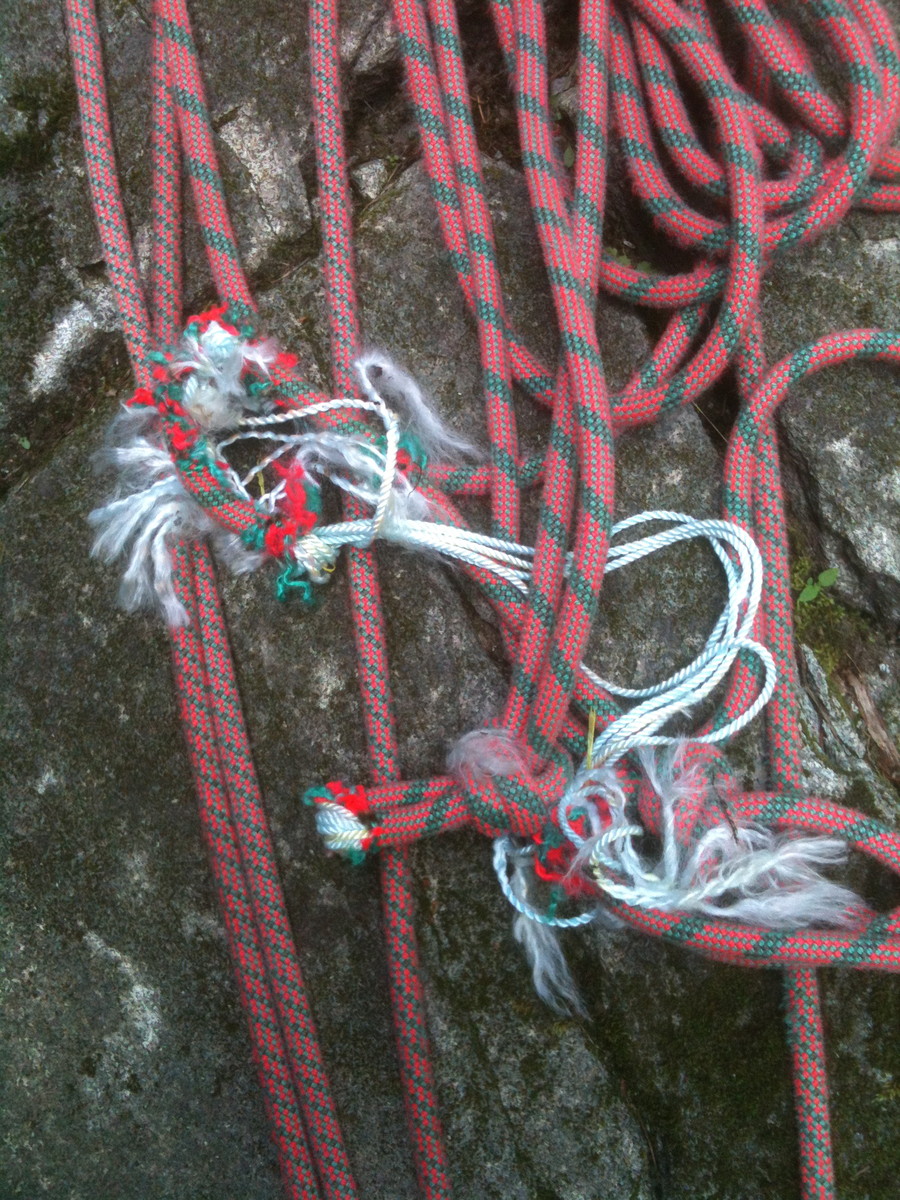
So I tied off the damaged sections and had to pass ten knots on the way to the target anchor.
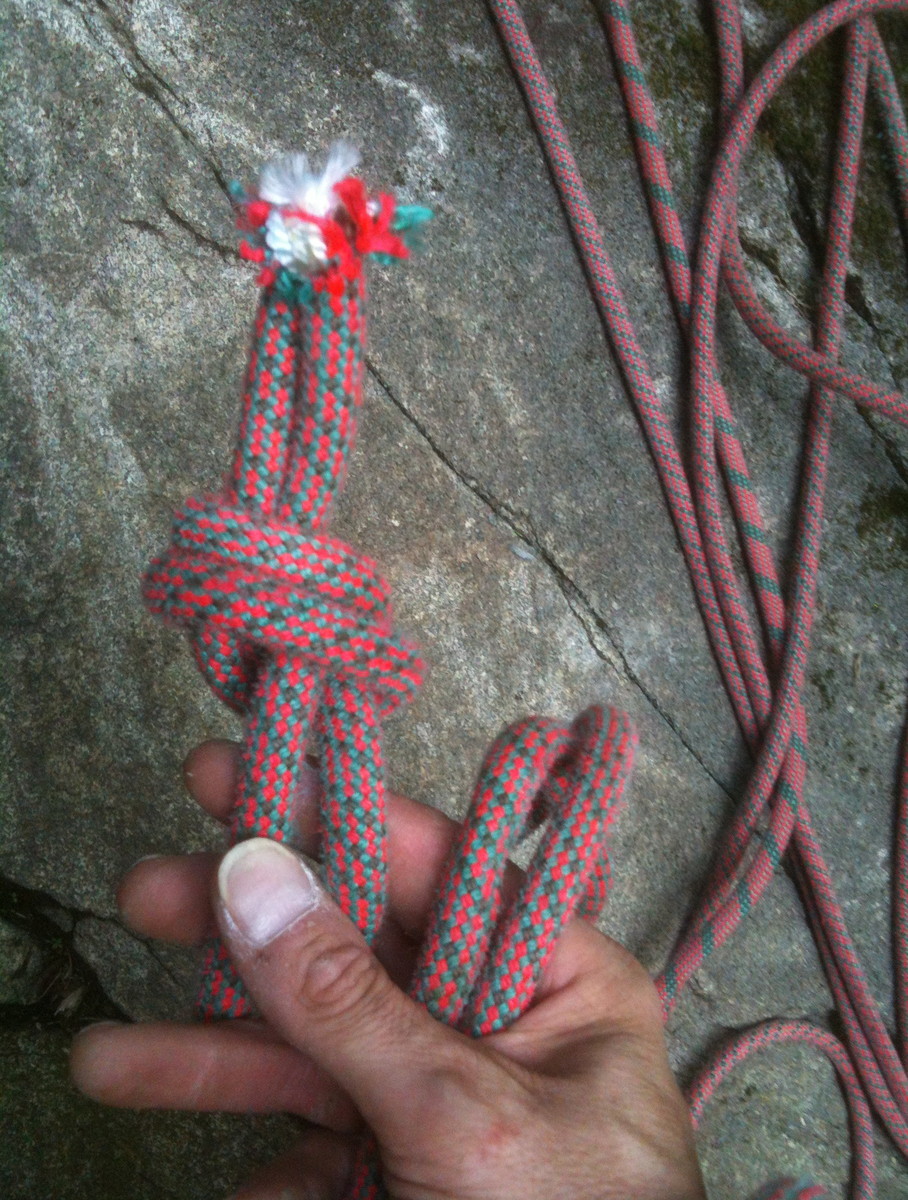
I went up and down finalizing the project protection plan, and then drilled and placed four bolts on a way-hard-for-me project.
It's tough to drill when the route is overhanging and the features are sidepulls (no cracks here).
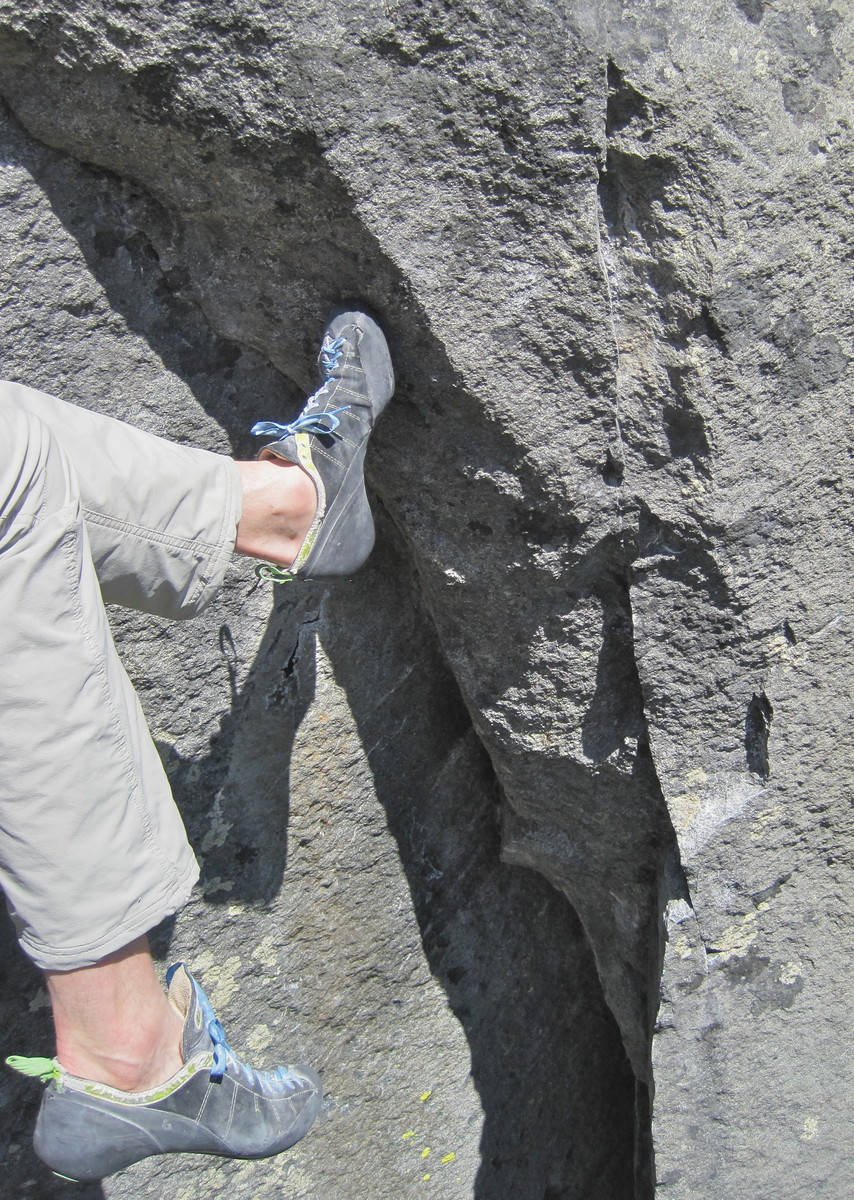
The ab workout was complete, and a name for the line emerged: Bladerunner.
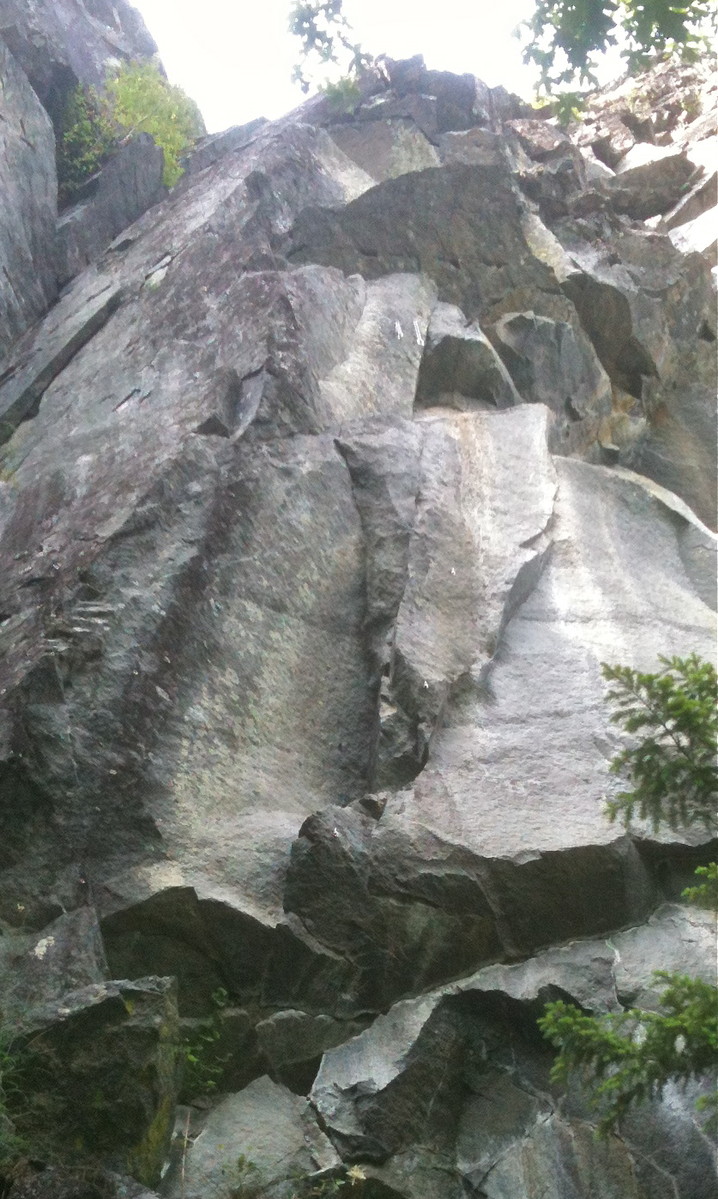
Now I just need to unlock the crux...but that's a story for another day.
I dashed down to the trailhead to meet DavidY for the next event:
Leg 2: Leg presses and assorted strenuous oddities during log wrangling.
We planned to remove a large tree that's been blocking the trail for two years.
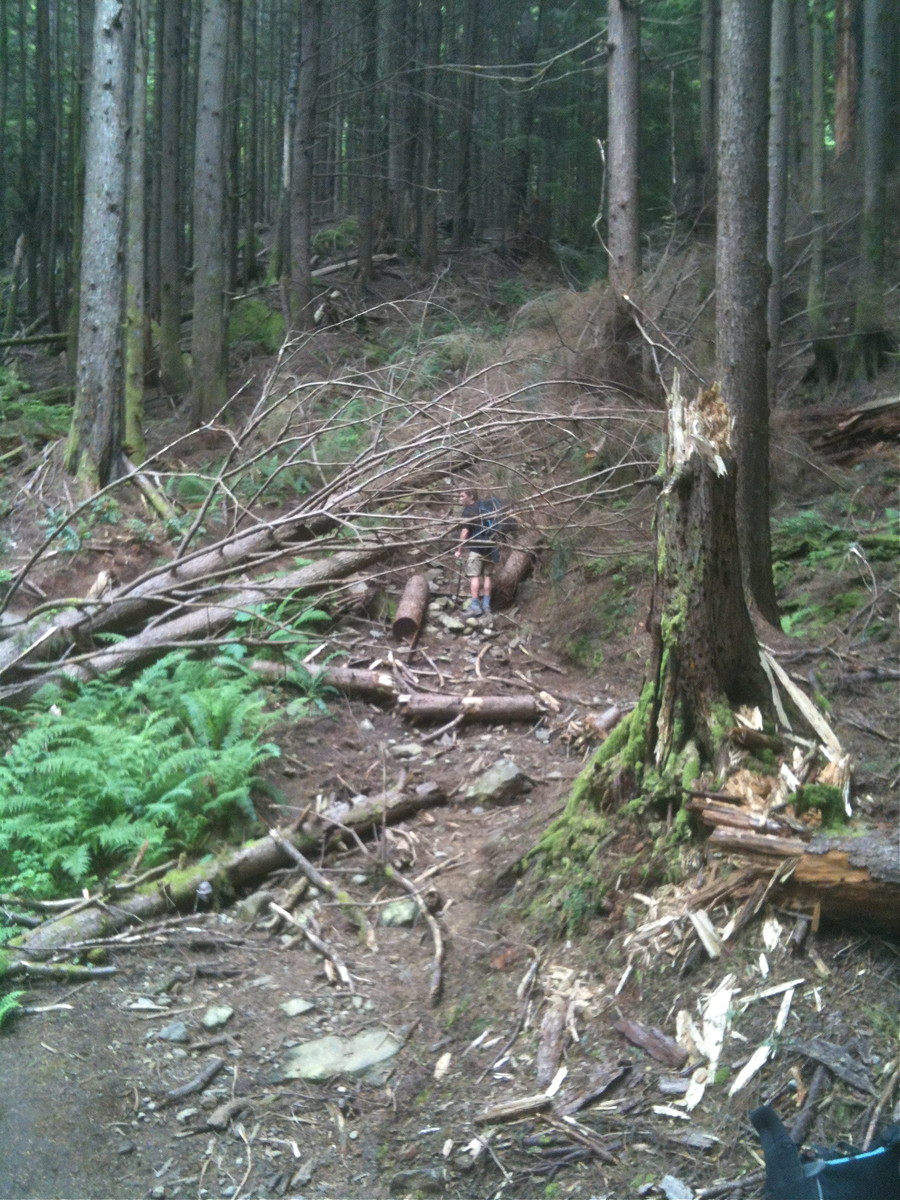
Climbers have been making a mess going around this thing for some time.
The crux of the biscuit was a 40ft span of 17 to 22 inch trunk. Many limbs were removed before this shot.
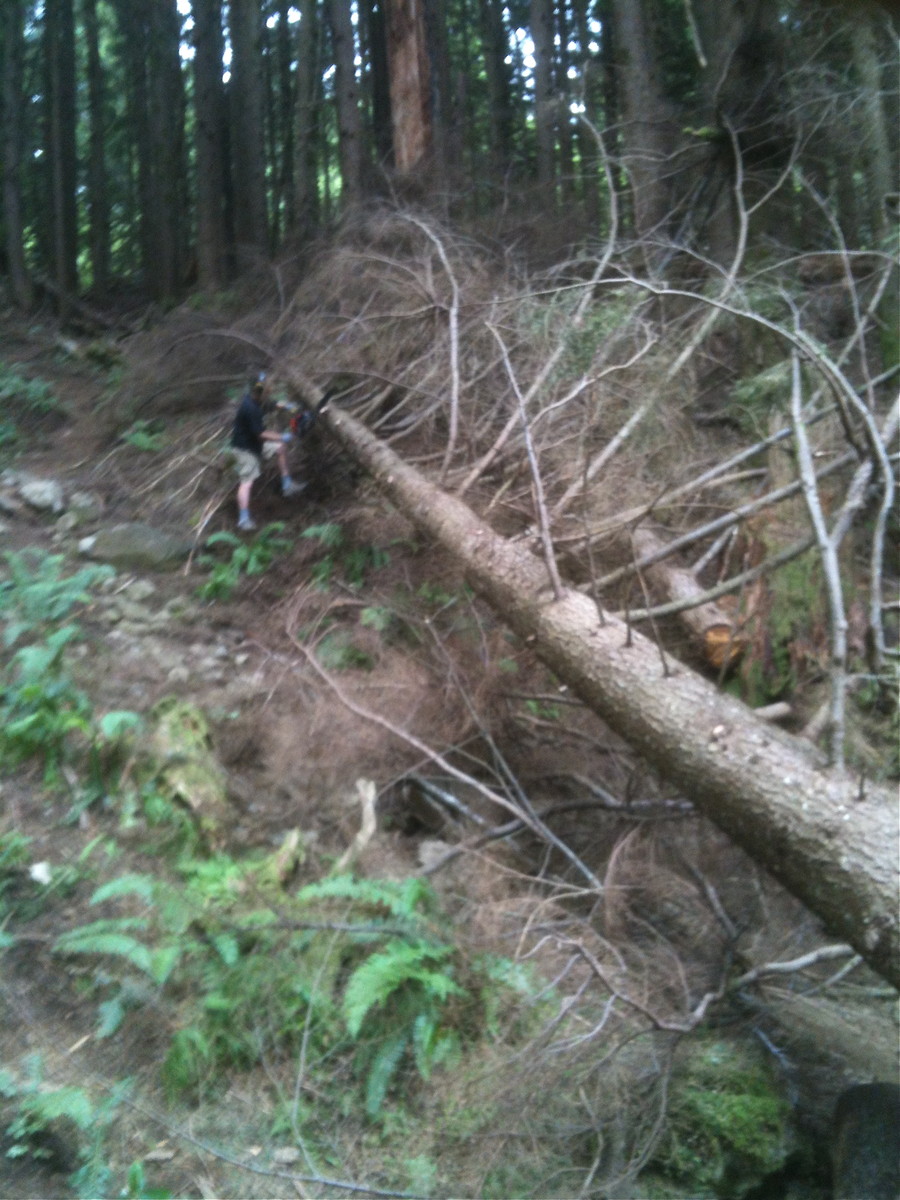
David played with power tools. I did the grunt work.
Cutting under tension was difficult. Wrestling 4-6ft sections of trunk out of the trail wasn't much easier.
But now the trail is back where it should be.
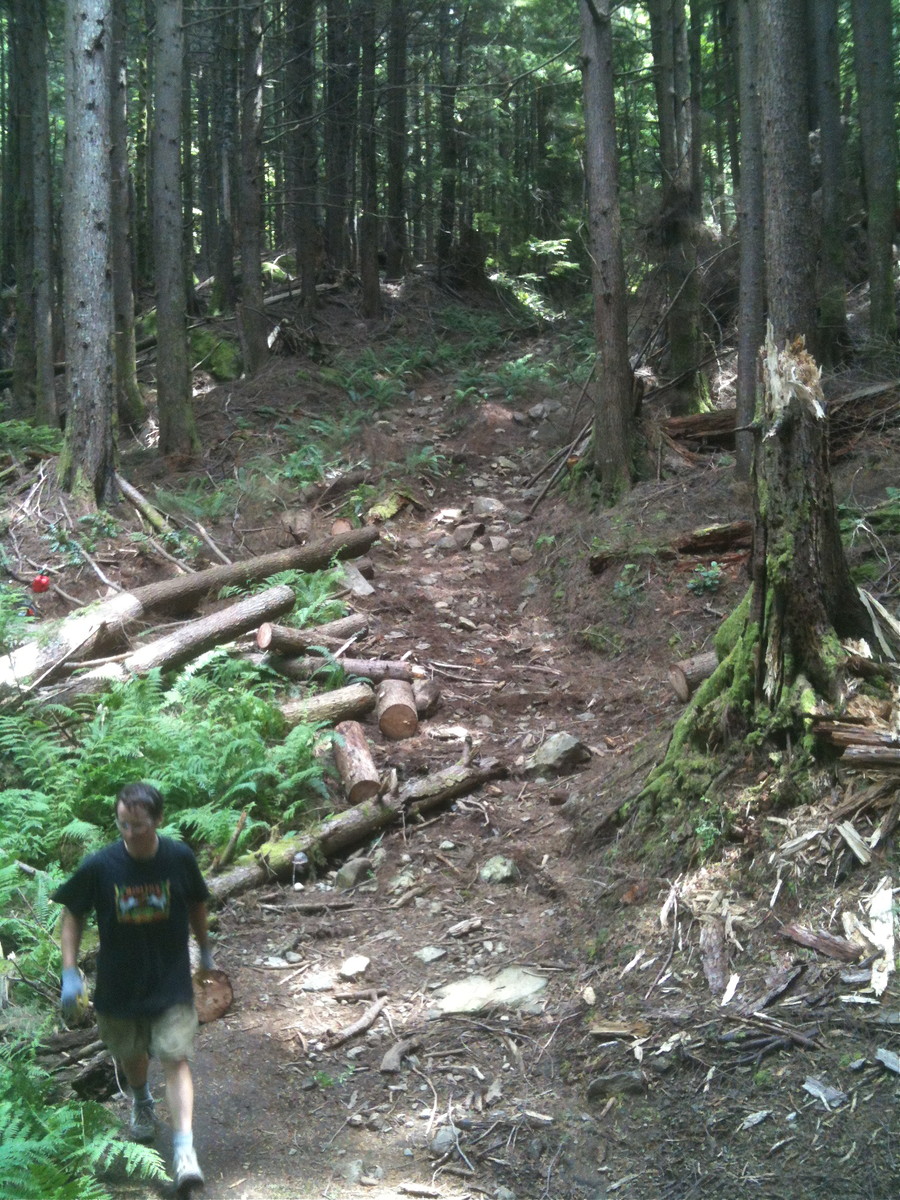
A better trail is needed, and that will take a lot of work, but first we need to figure out what's up with the mysterious optical fiber.
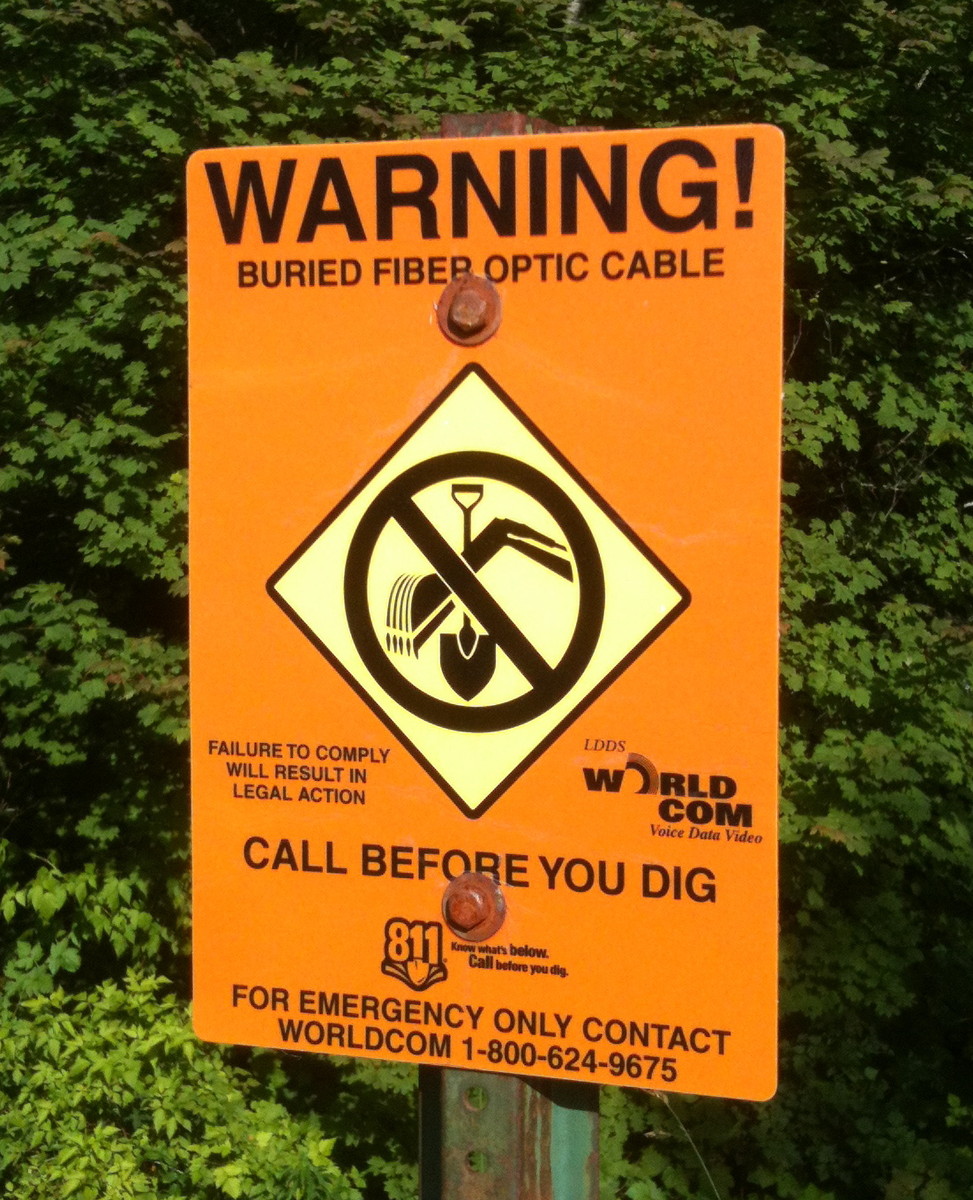
Urban duties called, but I persuaded David to push on to the next stage:
Leg 3: Climb two routes at Shangri-La.
Free Radical is the **** 11a arete right of Guillotine, which Ian is shown climbing in a pic from last summer. Bladerunner is on the overhanging face to the right.
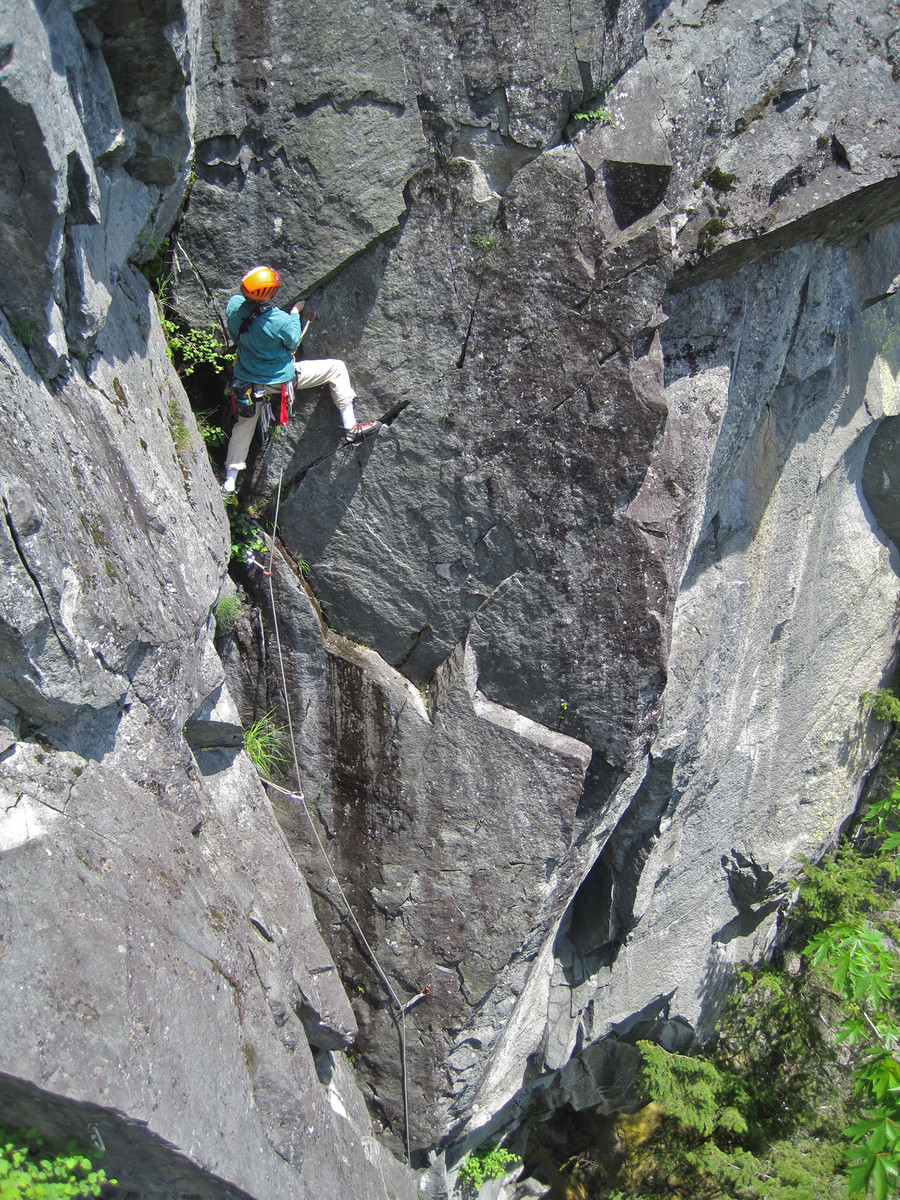
Above that is a 30m 10a called Hangman. It has a very alpine feel.
We rapped, David retrieved his stashed saws, and he dashed for Seattle.
I gathered my rodent-eaten ropes, lead rope, and other gear and ambled down the trail at a slower pace.
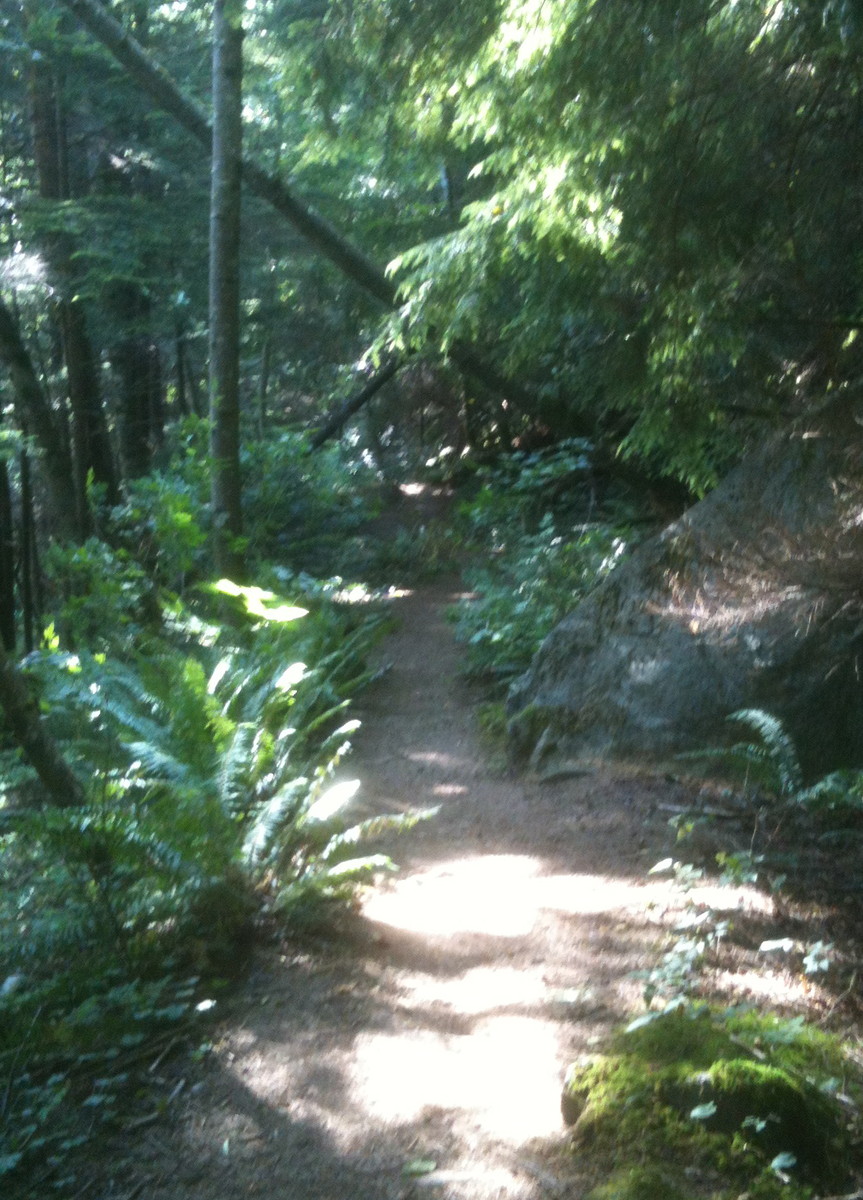
No summer outing at Shangri-La is complete without a dip in the SnoQ,
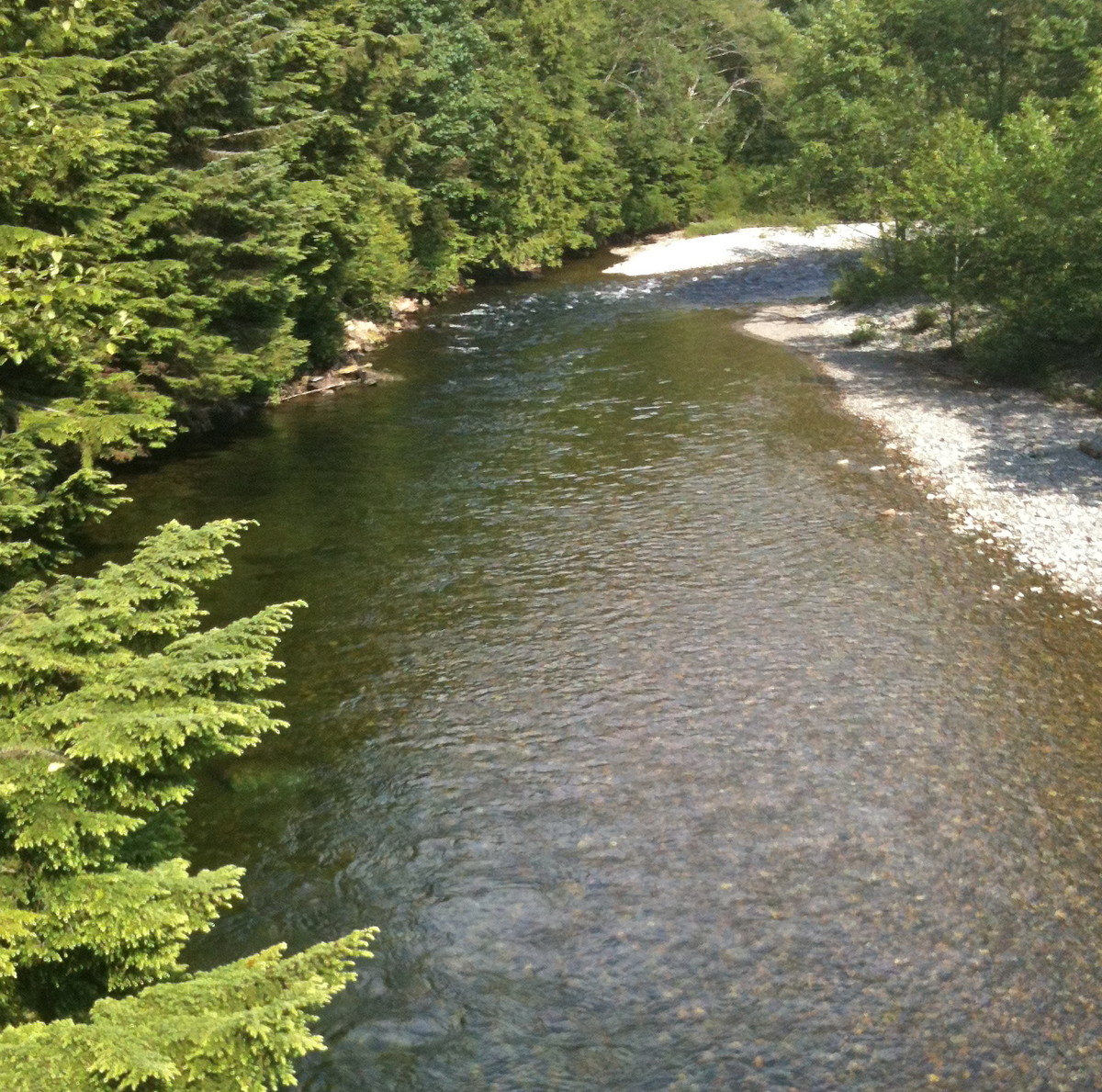
and this is the perfect swimming hole to do it.
Gear Notes:
Power tools and climbing gear.
Approach Notes:
X38 Far Side.
-
Kidding. Looks like poison ivy to me.
-
Best way to find out is to use it instead of toilet paper and then report back 6 hours later....
-
I'm heading out tomorrow morning to clear the trees off the Far Side trail. We'd love to have some extra hands to make things go faster.
Afterward, I'd be keen to climb. Have some ideas in the 10, 11, 12 range and/or can show you around Shangri-La.
PM if interested.
-
I'm heading out tomorrow morning to clear the trees off the Far Side trail. We'd love to have some extra hands to make things go faster.
Afterward, I'd be keen to climb. Have some ideas in the 10-11 range and/or can show you around Shangri-La.
PM if interested.



Any thoughts about the 18V Makita Rotary Hammer
in Climber's Board
Posted · Edited by Rad
.